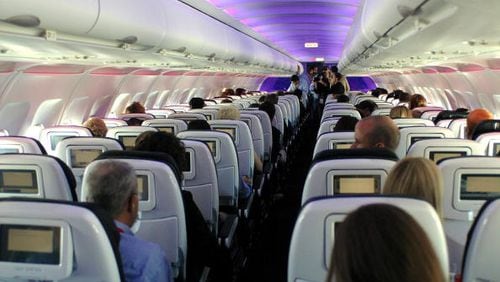If you've been on an airline flight with another passenger who is coughing and sneezing, you may have wondered how likely it is you could be infected.
A study by researchers from Emory University and Georgia Tech examines just that, and found that you're most at risk if you're seated within two seats or within one row of a passenger with the flu or similar respiratory infection.
VIDEO: In other health news
The researchers, Emory nursing school professor Vicki Hertzberg and Georgia Tech math professor Howard Weiss, took five round trip flights across the country in the name of research, documenting how passengers and crew moved around and sampling surface areas like seat belt buckles, tray tables and lavatory door handles.
"We now know a lot about how passengers move around on flights. For instance, around 40 percent of passengers never leave their seats, another 40 percent get up once during the flight, and 20 percent get up two or more times. Proximity to the aisle was also associated with movement. About 80 percent of passengers in aisle seats got up during flights, in comparison to 60 percent of passengers in middle seats and 40 percent in window seats. Passengers who leave their seats are up for an average of five minutes," Hertzberg said in a written statement.
The researchers found that it's unlikely for a disease to be transmitted beyond a one-meter area of a sick passenger, but infections could also be transmitted by touching an infected surface.
MYAJC.COM: REAL JOURNALISM. REAL LOCAL IMPACT.
AJC Business reporter Kelly Yamanouchi keeps you updated on the latest news about Hartsfield-Jackson International Airport, Delta Air Lines and the airline industry in metro Atlanta and beyond. You'll find more on myAJC.com, including these stories:
Never miss a minute of what's happening in local business news. Subscribe to myAJC.com.







